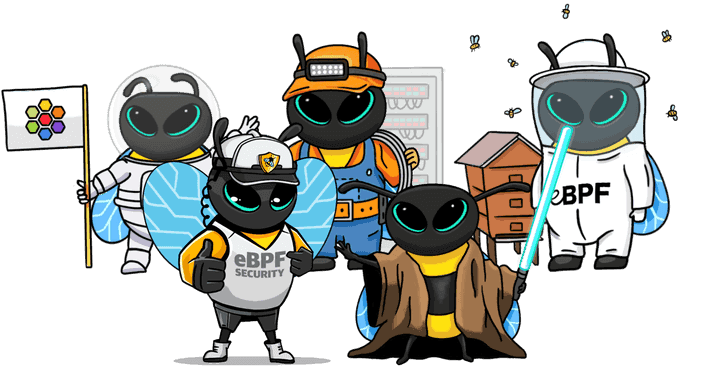
Auditing Tetragon Logs for Better eBPF Log Analytics in Kubernetes Clusters 🐝
Content
eBPF Log Analytics in Kubernetes Cluster with eBPF-Based Tetragon Using Parseable 🕸️
🛰️ Overview
eBPF is a powerful technology that allows you to extend the Linux kernel at runtime, without having to modify the kernel source code or reboot. This makes it ideal for a wide range of use cases, including security, observability, and networking.
One of the most exciting applications of eBPF is log analytics. By using eBPF to hook into kernel calls, you can collect detailed information about everything that is happening in your Kubernetes cluster. This information can then be analyzed with a tool like Parseable to identify trends, patterns, and anomalies.
In this blog post, we will show you how to use Parseable to audit Tetragon logs in your Kubernetes cluster. We will also examine a specific use case for auditing and alerting on sensitive file access.
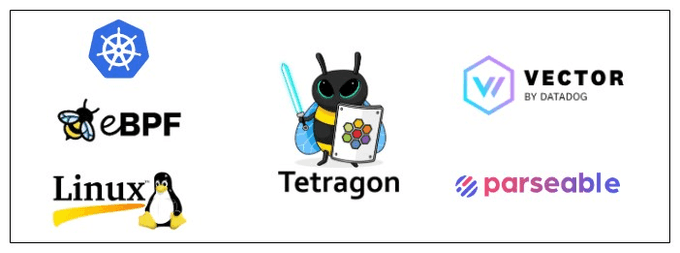
Getting Started
eBPF is a technology that enables the Linux kernel to be extended at runtime, i.e., without modifying the kernel source code or rebooting it. It has been noted that eBPF does to Linux exactly what JavaScript does to HTML. The extended Berkeley Packet Filter, or eBPF, allows us to dynamically program the Linux kernel and obtain insights. Generally, eBPF functions in networking, security, and observability.
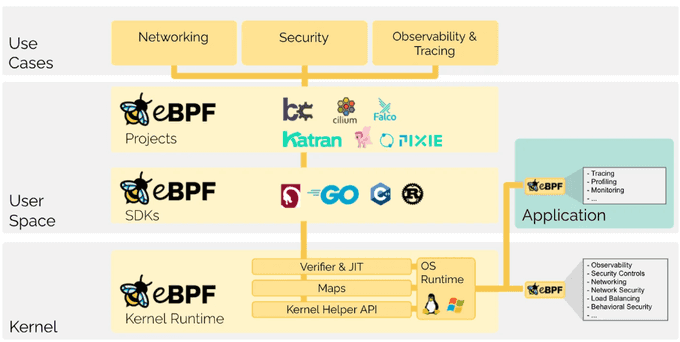
Parseable is a log analytics platform, built for the modern, cloud-native era. Parseable uses an index-free mechanism to organize and query data, allowing low latency and high throughput ingestion and query.
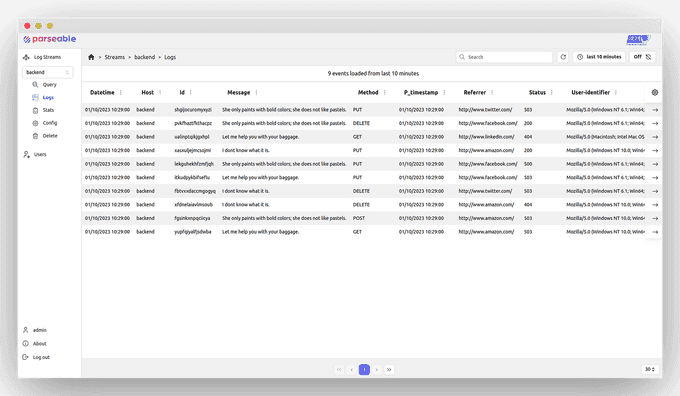
Tetragon is a powerful Kubernetes-aware security observability and runtime enforcement tool that applies TracingPolicy and filtering directly with eBPF. It ensures the reduction of observation overhead by tracking any process and real-time policy enforcement.
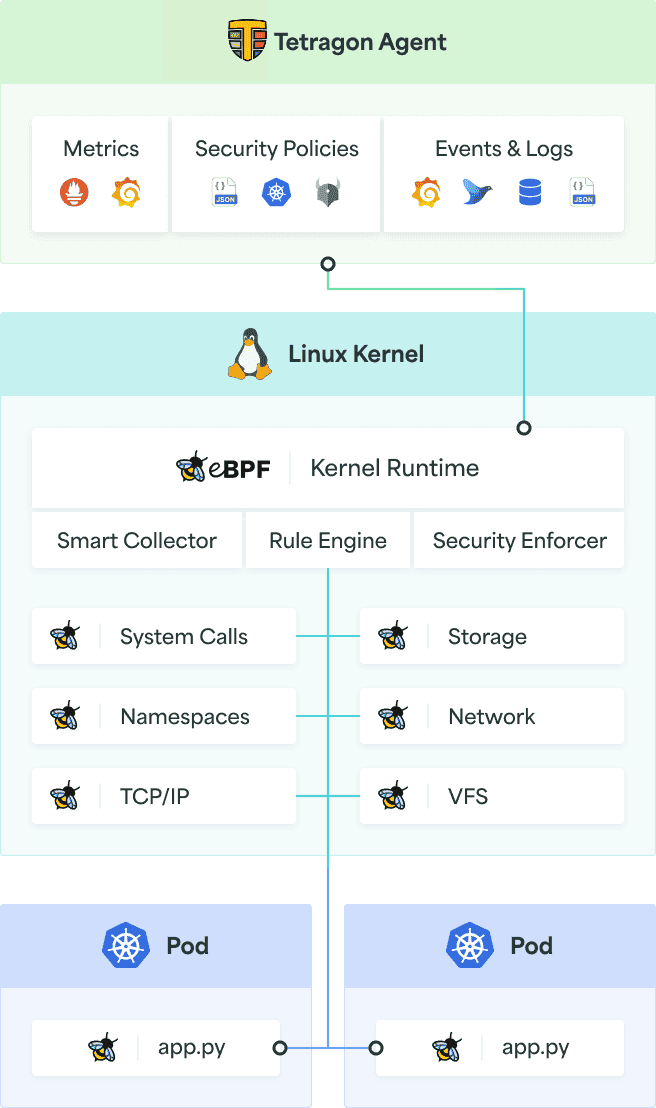
As shown in the above figure, Tetragon is deployed to the Kubernetes cluster. Tetragon uses hook points in eBPF programs to observe kernel calls. If any TracingPolicy is applied, it filters the logs as per the policy configuration. When any event is filtered using TracingPolicy, it stores Tetragon logs locally or uses a webhook backend like Parseable to collect logs.
📋 Pre-requisites
To get started, you'll need the following pre-requisites:
- A Kubernetes cluster with admin access. You can create a local one using Minikube or Kind.
kubectlandhelminstalled.
We'll implement Tetragon logs using TracingPolicy. The Tetragon server stores them in a local file system and configures Vector, a lightweight, ultra-fast tool, to send logs to the Parseable server. Finally, we'll verify Tetragon logs in the Parseable UI for sensitive file access via a Kubernetes pod.
Hands-On
We'll implement Tetragon logs using TracingPolicy. The Tetragon server stores them in a local file system, and we'll configure Vector, a lightweight, ultra-fast tool, to send logs to the Parseable server. Finally, we will verify Tetragon logs in the Parseable UI with sensitive file access through the Kubernetes pod.
Here is the high-level architecture that shows what we would achieve:

We will perform the following tasks to understand how Parseable helps us in auditing Tetragon logs:
- Enable Tetragon in the Kubernetes cluster which stores logs locally.
- Send Tetragon logs to Parseable through Vector.
- Access sensitive files from the pod and generate alerts through Parseable.
🛠️ Setup Environment
Install Tetragon using Helm
helm repo add cilium https://helm.cilium.io
helm repo update
helm install tetragon cilium/tetragon -n kube-systemWait for a moment, then:
kubectl get ds tetragon -n kube-system
kubectl logs -n kube-system -l app.kubernetes.io/name=tetragon -c export-stdout -fInstall Parseable
Follow this installation guide to install Parseable on your Kubernetes cluster. Wait for Parseable to start, and then verify that Parseable pods are running in the parseable namespace:
kubectl get pods -n parseableConfigure Vector to Send Logs to Parseable
Install Vector through Helm. We have a vector-tetragon-values.yaml file configured to access the tetragon.log file.
helm repo add vector https://helm.vector.dev
wget https://github.com/seifrajhi/tetragon-vector-parseable-blog/blob/main/vector-tetragon-values.yaml
helm install vector vector/vector --namespace vector --create-namespace --values vector-tetragon-values.yamlIt will take a few minutes for the Vector pod to get started. Verify the vector pod is running in the vector namespace:
kubectl get pods -n vectorNow Vector is ready to send the events stored in /var/run/cilium/tetragon/tetragon.log file. Once this is done, you can verify the log events in the Parseable UI.
🔍 Track Sensitive File Access with Parseable
Although integrating Tetragon logs with Parseable has several advantages, we will concentrate on one of the most notable use cases — auditing Tetragon events when accessing sensitive files like /etc/shadow.
Create a Pod to Access Files on the Host
Create a pod with privileged access.
# dev-pod.yaml
apiVersion: v1
kind: Pod
metadata:
name: dev-pod
spec:
containers:
- command:
- /nsenter
- --all
- --target=1
- --
- su
- "-"
image: alexeiled/nsenter:2.34
name: nsenter
securityContext:
privileged: true
stdin: true
tty: true
hostNetwork: true
hostPID: trueApply the pod configuration:
kubectl apply -f dev-pod.yamlTo list the pods:
kubectl get podsApply TracingPolicy
Apply TracingPolicy for read/write access.
wget https://github.com/cilium/tetragon/blob/main/examples/tracingpolicy/filename_monitoring_filtered.yaml
kubectl apply -f filename_monitoring_filtered.yamlThis policy monitors a specific file, /etc/passwd. If you check the content of the TracingPolicy file, it hooks on kernel functions from which the file can be accessed:
security_file_permissionsecurity_mmap_filesecurity_path_truncate
This TracingPolicy will extract read/write event logs.
Access Sensitive Files from a Pod
Now, exec into the dev-pod and apply the cat command to read the /etc/passwd file:
kubectl exec -it dev-pod -n default -- cat /etc/passwdYou can verify the logs from the Parseable Console. Next, we will generate an alert in Parseable to get a notification when a sensitive file is accessed.
🚨 Set an Alert in Parseable
Parseable allows us to generate an alert when the /etc/shadow file is read from the pod. Use the following JSON code to set an alert from the Parseable UI. Click console -> config -> alert.
To generate an alert for a specific pod:
{
"version": "v1",
"alerts": [
{
"name": "Unauthorised access",
"message": "/etc/shadow file is accessed by an unauthorised pod",
"rule": {
"type": "composite",
"config": "(process_kprobe_process_arguments =% \"shadow\")"
},
"targets": [
{
"type": "webhook",
"Endpoint": "<webhook.site_custom_endpoint>",
"skip_tls_check": false,
"repeat": { "interval": "10s", "times": 5 }
}
]
}
]
}This alert will trigger when the /etc/shadow file is accessed from the pod. Set up the target endpoint by going through webhook.site and copying your unique URL. Paste it in place of webhook.site_custom_endpoint. Click the Submit button.
Now, let's verify how the above Parseable setup triggers an alert. Exec into the dev-pod and apply the cat command to read the /etc/passwd file and check the unique URL to see the alerts:
kubectl exec -it dev-pod -n default -- cat /etc/passwd🏁 Conclusion
This post explained how Parseable can be used to analyze Tetragon logs in Kubernetes. We set up a logging pipeline from Tetragon to Parseable using Vector, applied a TracingPolicy to filter the logs, and generated alerts in Parseable when sensitive files were accessed.
If you have any further ideas or feedback, please join our Slack channel to share them. We value your insights and look forward to hearing from you.
Until next time, つづく 🎉
💡 Thank you for Reading !! 🙌🏻😁📃, see you in the next blog.🤘 Until next time 🎉
🚀 Thank you for sticking up till the end. If you have any questions/feedback regarding this blog feel free to connect with me:
♻️ LinkedIn: https://www.linkedin.com/in/rajhi-saif/
♻️ X/Twitter: https://x.com/rajhisaifeddine
The end ✌🏻
🔰 Keep Learning !! Keep Sharing !! 🔰
📅 Stay updated
Subscribe to our newsletter for more insights on AWS cloud computing and containers.
